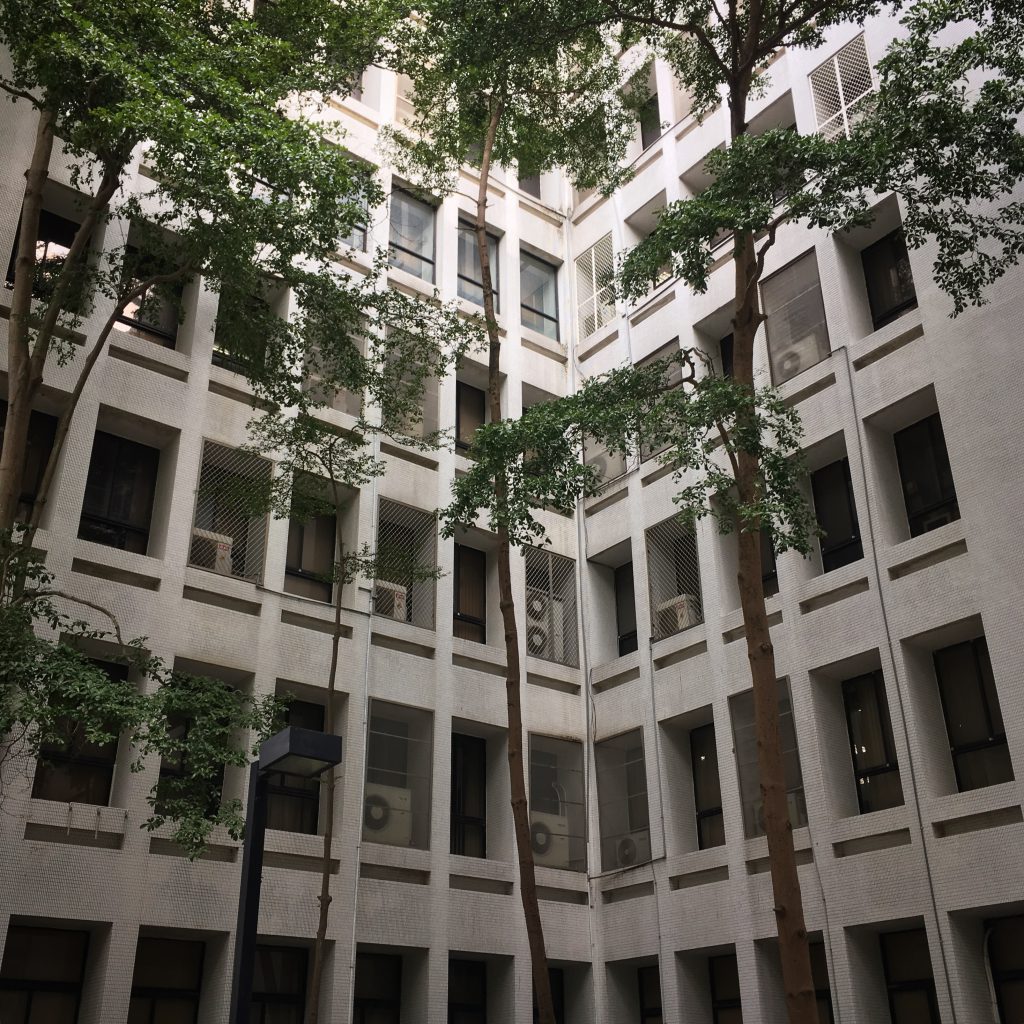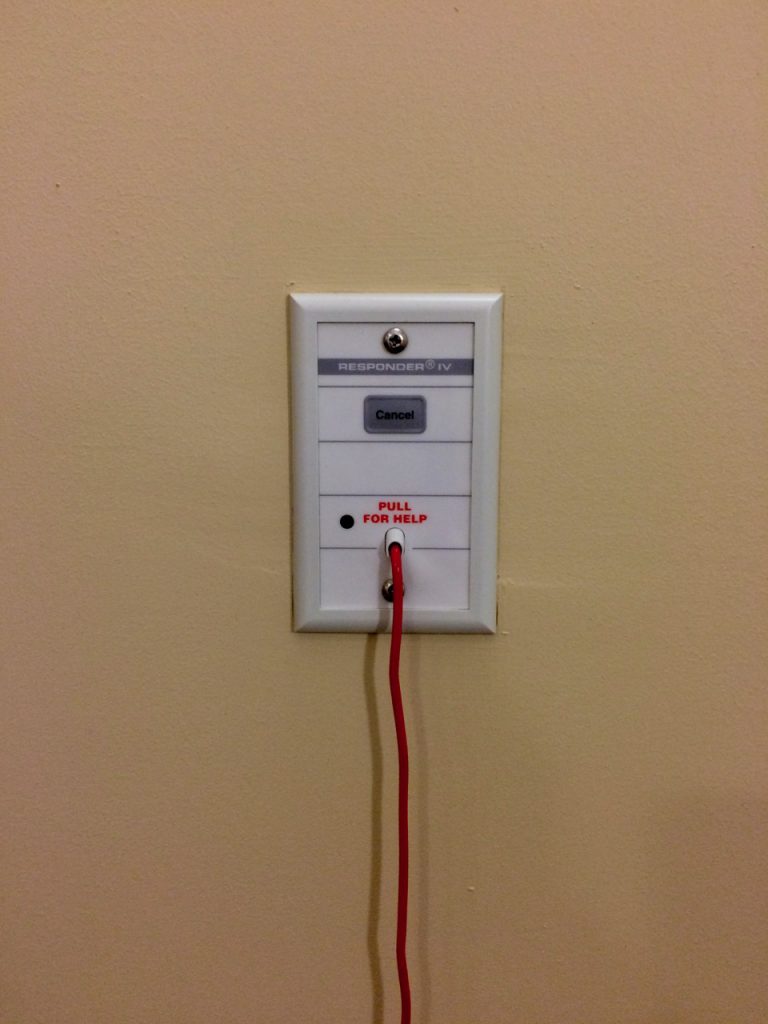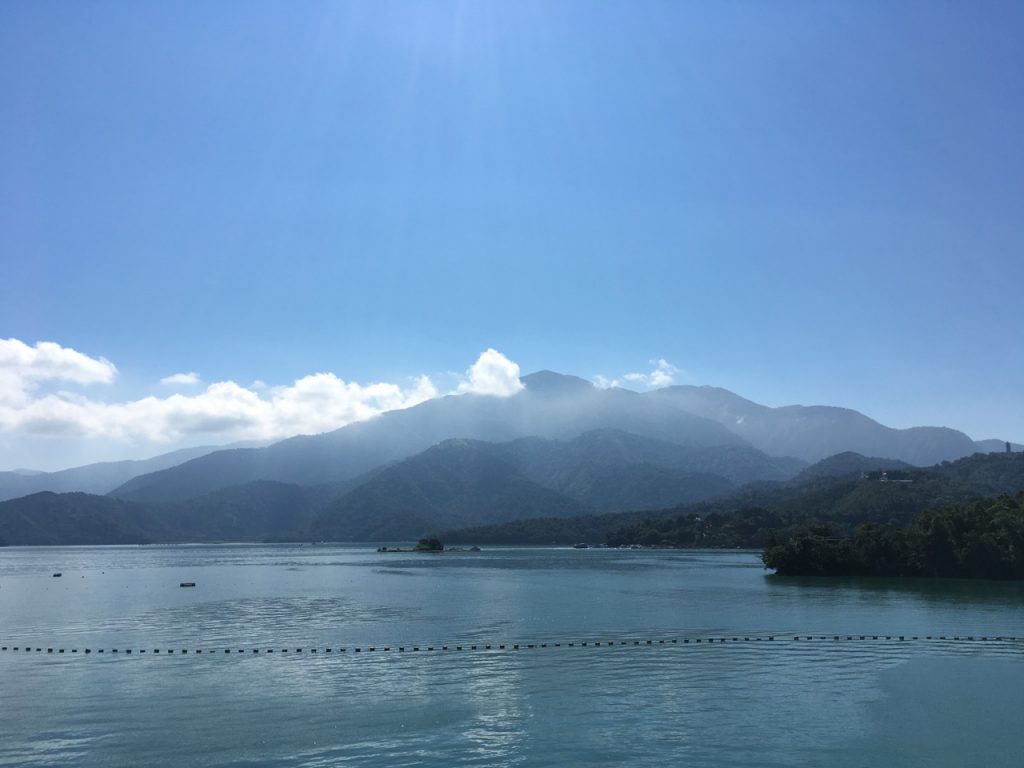In 1992 Bill McKibben “spent many months of forty hour weeks” attempting to watch twenty-four hours of television as recorded on ninety-one cable stations in Virginia (at the time, the most in the world). He wrote up his findings in the book, “The Age of Missing Information.”
“We believe that we live in the ‘age of information.’” he writes. “That there has been an information ‘explosion,’ an information ‘revolution.’ While in a certain narrow sense this is the case, in many important ways just the opposite is true. We also live at a moment of deep ignorance, when vital knowledge that humans have always possessed about who we are and where we live seems beyond our reach. An Unenlightenment. An age of missing information.”
The medium was no longer the message, it was just an asshole.
The Age of Missing Information & How I Got My Attention Back
Yearly Archives: 2017

It’s important for us all to play and try new things. For both fun and to apply the things we learn to the main activities we perform each day.
What I had to say to you, moreover, would not take long, to wit: Practice any art, music, singing, dancing, acting, drawing, painting, sculpting, poetry, fiction, essays, reportage, no matter how well or badly, not to get money and fame, but to experience becoming, to find out what’s inside you, to make your soul grow.
Seriously! I mean starting right now, do art and do it for the rest of your lives. Draw a funny or nice picture of Ms. Lockwood, and give it to her. Dance home after school, and sing in the shower and on and on. Make a face in your mashed potatoes. Pretend you’re Count Dracula.
Kurt Vonnegut Via.
A Sociology of the Smartphone
For many of us, they are the last thing we look at before sleep each night, and the first thing we reach for upon waking. We use them to meet people, to communicate, to entertain ourselves, and to find our way around. We buy and sell things with them. We rely on them to document the places we go, the things we do and the company we keep; we count on them to fill the dead spaces, the still moments and silences that used to occupy so much of our lives.
For all its ubiquity, though, the smartphone is not a simple thing. We use it so often that we don’t see it clearly; it appeared in our lives so suddenly and totally that the scale and force of the changes it has occasioned have largely receded from conscious awareness. In order to truly take the measure of these changes, we need to take a step or two back, to the very last historical moment in which we negotiated the world without smartphone in hand.
It’s been transformative in many ways, but issues of overuse have gradually created the impression that the smartphone is creating more problems than it is solving. Just look at any dinner table at a restaurant in Taiwan as an example.
One of the more interesting stories coming from the experiences using the new Apple Watch LTE is the freedom of not having a phone with you, with all it’s attention sucking habits. People feel free. With the limited interaction afforded by the Apple Watch, Apple has recreated the basic flip phone of the past, but as jewelry on your wrist.
The Problem With Our Phones
Research shows that technology has increased the “asshole problem,” as Sutton puts it, because people are much more likely to be mean if they don’t have to make eye contact.
This Stanford Professor Has a Theory on Why 2017 Is Filled With Jerks By Jessica Pressler
Add identity politics, tribalism and ideology and you have a reason to never engage in online discussion. Especially about politics.
This site is not available in your country

User Hostile Message
It’s not often you see such a user hostile way of geo-blocking customers. Perhaps Reisenthel Accessories doesn’t understand the value a good customer experience helps them drive sales and increase their brand value.
Edit: Updated to include correct screenshot.
From the New York Times Weekend Briefing:
Western food companies are aggressively expanding in developing nations, unleashing a marketing juggernaut that’s contributing to a new epidemic of chronic illnesses fed by soaring rates of obesity.
How Big Business Got Brazil Hooked on Junk Food
In an era of fake news and “Make America Great Again” propaganda this struck me as an unusually honest statement to come from an American news publication.
Been a long time

Interior courtyard at Tsing Hua University
It almost feel like I’ve come full circle. I started studying Chinese at Tsing Hua University years ago, I started slowly with only a few classes a week and later left for an intensive program at Zhong Yang. So if the class gets approved I’ll be returning for 1 class a week as a sort of refresher course. It’s not a difficult class but it will give me an incentive to study and an opportunity for correction. It will be a nice change of pace too.
I’m back in Hsinchu for awhile to focus on a new project and do some necessary learning. It’s great to be wife family again.
Barry’s impact on the assembled Goddard employees was immediate; from the moment she arrived, she insisted on abandoning all electronic devices. “They were really flipped out about it,” says Barry. “The phone gives us a lot but it takes away three key elements of discovery: loneliness, uncertainty and boredom. Those have always been where creative ideas come from.
Lynda Barry at NASA: Drawing to Infinity and Beyond. Via RUK.
Thinking, particular creative thought requires disengagement. My best work, or really any work that requires thought at all, is generally done without a mobile phone or any screen. Later, after pen has hit paper, these ideas are ready to be solidified with some kind of device with a screen.
Community is critical for creative folks because creating the work is so inwardly focused. … Participating in a community becomes a way to let some sympathetic people into your process so you don’t go crazy, while still protecting the work in its unfinished and fragile state. I see community as people working parallel to one another, sharing information and resources freely with each other. This is how useful information spreads around and how creative people find new opportunities.
Frank Chimero
Self-Service Library

The library comes to you. In a large public park, Fuzhou, China
Deep Work
The ability to perform deep work is becoming increasingly rare at exactly the same time it is becoming increasingly valuable in our economy. As a consequence, the few who cultivate this skill, and then make it the core of their working life, will thrive.
Deep Work: Rules for Focused Success in a Distracted World
So I am injured
I wouldn’t go as far as to say that running has been life changing for me, I run as much for my mind as my body, but at 50 it has helped me get fit and be in good general health, perhaps more so than and other time in the past. I’m bounding up stairs while people half my age are groaning in agony.
Running is a great way to establish a daily routine, enforce discipline, overcome a bit of hardship, clear my mind and if the distance is just right, usually around 10k, a great chance to practice the kind of thinking I need to do good work. For 45m – an hour you can focus on 1 – 2 problems and almost always have a solution of some sort.
But as easy an activity that it appears, I seem to struggle more than many.
I’ve only been running for a few years and during that time have participated in numerous 10 – 21k races and 4 marathons. My times are always slow, but there has been steady improvement. Unfortunately, with each year brings a new injury to overcome. Like music or any discipline worth pursuing, accomplishment requires more than just putting in the time, it requires smart practice, and I guess I haven’t been smart enough.
My first injury was when I first started running (I had tried the coach to 5K earlier but didn’t stick with it past it’s completion). I prepared before each session by stretching and warming up, and my mileage wasn’t comparatively that much. One day after a particularly beautiful run through the PEI countryside I suffered a sharp pain in my back. All I could do was lay on the floor, sitting or standing was excruciating. Unfortunately I had a flight to Taiwan the next day – the most painful flight of my life. This began my education of how the muscles are connected through-out your body and the balancing act between strengthening your muscles and over-use. I was out for a few months, not because of my back but due to my glutes.
Another injury was in preparation for a marathon. My feet were painfully sore around my ankles which resulted in a pause in my training. During the race my legs were naturally sore but my feet were in such pain that when I crossed the finish line I needed a few minutes to compose myself, lest I cry in front of my son. I adjusted my training and tried new shoes, Hoka Clifton 3’s.
No major problems developed while I was training in China for the Xiamen marathon. I didn’t work on speed but mostly spent my time working on endurance and some hill repeats. I also made the occasional trip to the company health center to do some strength training. A company sponsored 10K showed some improvement but my left foot complained and I rested for a period. I ran the Xiamen marathon, slowly, but a new problem reemerged. While running in a marathon in Miaoli I suffered from severe dehydration brought on by excessive sweating. I hadn’t trained or run before in such high temperatures. I was close then to having severe problems but managed to crawl across the finish line. At Xiamen, water intake was a constant problem with dehydration and frequent toilet breaks an issue. My feet were problematic too.
I trained over the winter in PEI for a marathon in Thailand in June. I frequented the gym and other than the freezing cold suffered no real issues – but did start to notice some stiffness in my left leg below the knee. I had to cancel the run but I thought perhaps my problems were behind me.
This summer I began my training for a marathon in October anew. My mileage was to be the same but with a more gradual build and a longer run before the taper. I also incorporated more rigorous tempo runs for the first time. Gone also were the cushy Hoka and Saucony’s that I had worn out, and in were the more responsive Salomon’s. Immediately I had problems. The heat was killing me. I was suffering excessive sweating to the extreme. My sneakers were literally filling up with sweat and I looked more like I was out swimming than running. Over than being embarrassing it was affecting my performance. Some days I would lose 3 kilo’s in water weight and I wasn’t yet running more than 21k. I eventually tuned my hydration strategy and ended up carrying 3L of water on my back for long runs. But that stiffness on my left side persisted and with a visit to a physiotherapist discovered a number of issues including that my right side was far weaker than my left. Before I could start the new exercise regime in earnest, and after a long mid-week run I developed pain in my right foot. It has been severe enough that I haven’t run in 4 days, an eternity for me, and my initial arm chair diagnosis reveals that it’s likely a mild form of plantar fasciitis.
These kind of setbacks are common for many runners, though usually they are far more serious runners than I. Running started out as an easy quick way to get out the door and get some exercise. Get up, put on your shoes, stretch, warm-up and go. Now it requires a far greater commitment to total body fitness than I ever imagined. Where we live is a bit of a dead zone for organized fitness classes, trainers and such (Hsinchu is devoid of any quick transportation options). So this is going to require a bit more discipline and commitment on my part.
A life that doesn’t include hard-won accomplishment and triumph over obstacles may not be a satisfying one. There is something deeply fulfilling — even thrilling — in doing almost anything difficult extremely well. There is a joy and pride that come from pushing yourself to another level or across a new frontier. A life devoted only to the present — to feeling good in the now — is unlikely to deliver real fulfillment. The present moment by itself it too small, too hollow. We all need a future. Something beyond and greater than our own present gratification, at which to aim or feel we’ve contributed.
The Triple Package
Small Restaurant in Xiamen

One of the more popular spots in the area
What is school for
Our grandfathers and great-grandfathers built school to train people to have a lifetime of productive labor as part of the industrialized economy. We are raining kids to be factory robots.
From Seth Godin:
If you get ahead for years and years because you got dealt good cards, it’s not particularly likely that you will learn that in the real world, achievement is based as much on attitude and effort as it is on natural advantages. In the real world, Nobel prizes and Broadway roles and the senior VP job go to people who have figured out how to care, how to show up, how to be open to new experiences. Our culture is built around connection and charisma and learning and the ability to not quit in precisely the right moments.
What if we celebrated the students who regularly try the hardest, help each other the most and lead? What if we fast tracked those students, and made it clear to anyone else willing to adopt those attitudes that they could be celebrated too?
What if you got cast, tracked or made the cut because you were resilient, hard working and willing to set yourself up for a cycle of continuous improvement? Isn’t that more important than rewarding the kid who never passes but still scores a lot of goals?
Before you feature a trumpet prodigy at the jazz band concert, perhaps you could feature the kid who just won’t quit. No need to tell him he’s a great trumpet player–the fact is, none of these kids are Maynard Ferguson–just tell him the truth. Tell him that every single person who has made a career of playing the trumpet (every single one of them) did it with effort and passion, not with lips that naturally vibrate.
The wasteful fraud of sorting for youth meritocracy: Stop Stealing Dreams
Apple Watch and it’s frustrating UI for runners
Imagine you created a product which in one of the main marketed use cases the UI became inoperable. That’s the Apple Watch.
A year ago this past spring I got myself an Apple Watch as a bit of fun for finishing a long contract.
My needs were very simple. It was primarily going to be a device to support my burgeoning running hobby – notifications and music control were an added bonus. GPS would be nice, but at the time I almost always carried my phone so it wasn’t a necessity. Originally I thought of a Garmin, but as things often are here, the model I wanted wasn’t available and others only came with super bright color combinations (it also took Garmin 7 months to reply to my email about when the watch might be available, and the reply was a non-answer).
So I went with an Apple Watch (Series 0).
Generally, using the Apple Watch is a pretty satisfying experience. There have been periods of frequent crashes, especially with the buggy Nike+ app., and the 38mm version’s text and UI is just a little too difficult to read and operate.
But my next watch will likely be a Garmin.
There are a couple neat use cases which I like the watch for, dictating a note into Evernote (which I hardly use) and replying to iMessages with voice dictation. Unfortunately dictation is not entirely accurate and without punctuation becomes just a stream of harder to read text. I do find it a faster experience than typing on the iPhone, which might be the point. Outside of iMessage all notifications are off as I find it annoying.
Otherwise, my primary use case is running, and under optimal conditions it’s fine. You can awkwardly see your key running data and stop and start your run. The lifting your arm to see the display is entirely unnatural. Optimal conditions are rare. If your fingers or the screen are at all moist there is no guarantee your touch will be registered.
More concerning, however, is the functionality of the watch when it gets wet or sweaty. Good luck changing screens or getting the watch to respond. This was an issue my colleague Brian Dalek dealt with while testing the first version of this watch. It’s still an issue. On one hot day, I wiped my forehead to get my hands good and sweaty, and the Watch failed to respond to any touches on its face. This is one reason you still find buttons on running watches.
Apple Watch Series 2 Is a Solid Option
If it’s raining or you sweat a lot like me you can forget any accurate interaction with the UI. It can be impossible to stop a run or pause a running segment. Pretty disheartening if you just ran a great race or completed a great segment. So how do you stop the watch from recording your run? Well, today I had to leave it running until I could get home to wash my hands and polish the screen. Ridiculous.
Like many I’m sure Apple has a vigorous testing program – both for software and hardware. I’d love to understand how this decision was reached – produce a device with a focus on activity but let the lack of being able to control the device when sweating slide.
There are 2 hardware buttons on the side, Apple should open those up to allow 3rd party apps. to use as basic pause/start controls. Until then the Apple Watch is only usable if you don’t sweat.
Successes vs. failures

Readdle apps
This looks about right. Taken from Readdle software’s 10 year celebration page.
Many companies approach research all wrong
Where mindless work habits start

Gadget girl wearing her headphones and Pebble watch (RIP) while vacationing in Sun Moon Lake.
A twitter-like comment on a big issue.
School has started and the letters are starting to come home. Actually, school started for Catriona in the middle of summer because she is in grade 9 and they start school earlier here for that grade. Of course, the reason a test. All grade 9 students must take a test which determines which high school they attend, and it’s very competitive. In addition to starting early, and in fairness they finish a little early as well, they also have the option of supervised study sessions from 6 – 9pm every week night. That was the letter that came home. You pay a fee for dinner and a fee for the privilege. Parents are the supervisors. That means the kids are gone from ~ 7:45am until 9pm everyday. Most parents will willingly participate but I think it’s the stupidest thing I have ever seen. Anybody with any interest, or experience, in learning or getting thngs done, know that this is a complete waste of time (for most).
But I considered it. I considered it because nothing in her school program excites her to learn like her hobbies – reading and music. Few teachers can teach in a way that excites her (or anyone), the curriculum only accommodates procedural learning, not problem solving, research or collaboration, nor does the curriculum encourage self-exploration. Memorisation and being able to follow instruction is important, but the afore mentioned skills are what make for better and more employable people. But maybe that is the point, they don’t want graduates who can think … Because she is an independent child, smart, and unfortunately not always easy to motivate, her test scores have comparatively suffered. I briefly thought that this study prison might help her, luckily I quickly came to my senses.
If you can’t accomplish something at work or at school in 8 hours or less (preferably much less) than there is something wrong with the organization. Putting more time on task has diminishing and often negative returns (see 1, 2, 3). The space between work (or study) is often more valuable than the time spent working itself (1, 2, 3).
“A good user experience isn’t necessarily that far removed from a poor user experience. It can be small, subtle differences that can have a huge impact.”
Nathanael Boehm
Pull for help

Simple UI that fits the use case – mostly. As seen in the QEH in Charlottetown.
I hate HDMI
We’ve gone 19 years without subscribing to cable. Half that time without a TV. But after spending time in Canada and China where each place I lived came outfitted with large screen TV’s, I felt like something was missing upon returning to Taiwan.
So I bought a large screen TV. And an incredibly overpriced soundbar (Taiwan import tax).
It worked well for a while but yesterday I spent over an hour trying to find the reason for nothing but snow coming from the Apple TV, and no sound coming through the soundbar. And all those cables are in the back of the TV, making every change a chore. I now hate HDMI. I feel like I’ve gone back in time to when plug ’n’ play was marketing speak only.
It’s apparent that the incredibly overpriced soundbar that has failed, which will necessitate wasting some afternoon taking it back to where I bought only to be disappointed by their customer service.
“Nothing ever becomes real till it is experienced. Even a proverb is no proverb to you till your life has illustrated it.”
John Keats.
New shoes: Salomon S-Lab Sonic 2’s

The sports industry heavily promotes the notion that you should regularly replace your running shoes in an effort to avoid injury.
My Saucony’s recently reached the 1000km mark and as such I was due to for a replacement. Of all the running shoes I have had these past few years, my Salomon Fellraiser’s always seemed to have the best fit. I love how they grab my foot around the arches while still providing for a generous toe box. Salomon’s are a bit challenging to find, especially with road running not being their product focus, so each time I went to change shoes they were no where to be found. Luckily they opened a small specialty shop in Big City, so tried on and bought a pair of Salomon S-Lab Sonic 2’s. I’ve had them out for a few runs and they are working out well. I’m a hobbiest, and run as much for my mind as my body. With that in mind here a few impressions:
-
Good
- Beautiful looking shoe. Not a consideration but a nice bonus, especially when they are worn out and are relegated to casual wear.
- Some reviews I read complained about the mesh wearing quickly. If they are half as solid as my Fellraiser’s I will be very pleased; they are a very solid shoe.
- Good solid fit with good support in the heel. They are a lighter shoe and not as stiff as the Fellraiser.
- Bad
- Laces are very annoying. Standard knots will not do, as they easily come undone mid-run.
- Feel minimalist and don’t offer a lot of cushioning. Coming from Hoka One One’s and my Saucony’s these take some getting used to over longer distances.
- Products like this are always more expensive in Taiwan and seldom have markdowns but even without the Taiwan mark-up they are way too pricey.
This idea suggests a solution to the evolutionary paradox that is human childhood and adolescence. We humans have an exceptionally long childhood and prolonged adolescence. Why make human children so helpless for so long, and make human adults invest so much time and effort into caring for them?
The answer: Childhood and adolescence may, at least in part, be designed to resolve the tension between exploration and exploitation. Those periods of our life give us time to explore before we have to face the stern and earnest realities of grown-up life. Teenagers may no longer care all that much about how the physical world works. But they care a lot about exploring all the ways that the social world can be organized. And that may help each new generation change the world.
What Happens to Creativity as We Age?
6 photos from last week
A trip outside of of Hsinchu almost instantly changes your perspective of this place. The beautiful scenery no doubt plays a big part.

Sun moon lake – resting during bike a ride

Sun Moon Lake – at the end of a run around the lake.

合歡山 – no hiking but a drive over the top. Remarkable the change in temperature 3500m up.


Cross Island Highway

Near Hualian
If there was a gold rush it may be over. One in ten thousand mobile apps are considered a financial success.
Consumers are increasingly turning to recommendation engines, friends, social networking or advertising to discover mobile applications rather than sorting through the thousands of mobile apps available. As a consequence, Gartner, Inc. predicts that through 2018, less than 0.01 percent of consumer mobile apps will be considered a financial success by their developers.
“The vast number of mobile apps may imply that mobile is a new revenue stream that will bring riches to many,” said Ken Dulaney, vice president and distinguished analyst at Gartner. “However, our analysis shows that most mobile applications are not generating profits and that many mobile apps are not designed to generate revenue, but rather are used to build brand recognition and product awareness or are just for fun. Application designers who do not recognize this may find profits elusive.”
Gartner: Less Than 0.01 Percent of Consumer Mobile Apps Will Be Considered a Financial Success …
A key differentiator might be a solid UX strategy.
Only shuffle for you

The shuffle all button in iTunes
A confusing UI element in Apple’s iTunes.
- Clicking the button will result in an action that works as advertised, it shuffles the playlist. This button includes 2 other actions as well which may lead to confusion for many. It also plays the song list, without any indication that this is an included action. The other action is skip. While the list is playing clicking the button again will result in the player skipping the currently playing song.
- There is no indication that the shuffle function is active and no way to turn it off (no stop), except by going into a nested action inside the menu bar.
These little details matter when delivering a coherent user experience.
Apple Bluetooth Keyboard Hack

Apple’s Photos app crashed during export.
My old Apple bluetooth keyboard has been wonky for some time – I initially blamed some weird kind of wireless interference at my China office but realized when typing that either it or my desk was crooked. It wouldn’t be unheard of for wooden things to get all warped in my house in Taiwan, all my shelves are. It was the keyboard, which I guess got bent from my overstuffing my carryon, during one of my recent flights. While I would love to have a new Apple keyboard, the exorbitant prices make a little paper and tape hack far more acceptable.

